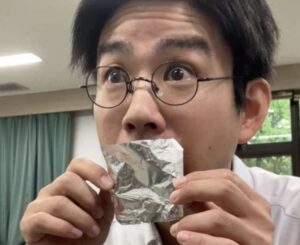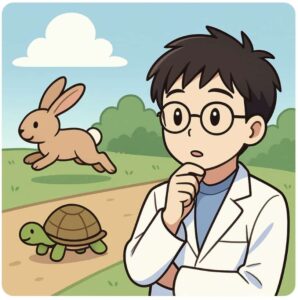Wild Weeds Are a Treasure Trove! Discover the Secrets of Monocots and “Closed Flowers” with Wall Barley
I’m Ken Kuwako, your Science Trainer. Every day is an experiment!
Do you ever pay attention to the “weeds” growing along the paths you walk every day?
It’s a huge missed opportunity to just walk past them, dismissing them as “just grass”! In reality, the plants at your feet are hiding incredible “survival strategies” they’ve developed to thrive in the harsh natural world.
Today, we’re spotlighting a common roadside grass, “Brome Grass” (or Bromus species). We’ll explore the crucial characteristics of Monocots, which is an important topic in science class, and uncover the weird secret of its “flower.” Your usual commute might just turn into a mini-lab!
Observing Brome Grass: Using a Common Roadside Plant in the Classroom
Even common roadside weeds are packed with the biological principles you find in textbooks. The plant we’ll be observing today is Brome Grass, a species from the Bromus genus in the Grass family (Poaceae).
🌱 Brome Grass Basics
Brome Grass is a monocot (grass family) that grows naturally along roadsides and in empty lots. Its Japanese name includes a word meaning “dog” (like “dog-wheat”), which in the world of plants often means “useless” or “similar but inferior” (meaning it looks like wheat, but isn’t the valuable crop).
However, as a science teaching material, it’s top-notch! It clearly demonstrates the traits of the grass family, making it perfect for understanding the differences between monocots and dicots.
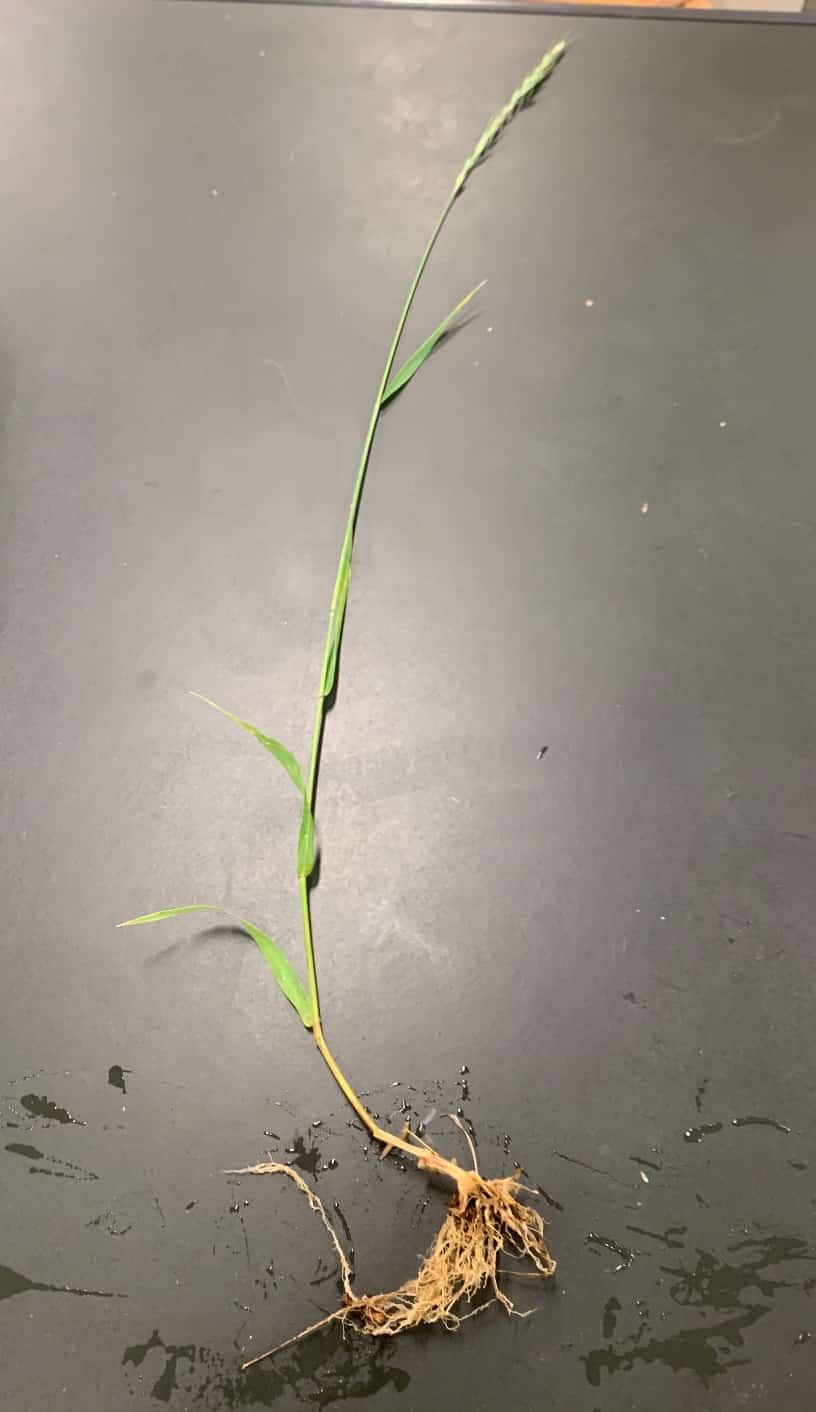
🔎 Key Features of Brome Grass
Let’s review the textbook features. Remember, all of these are the result of adaptation to tough environments.
- Root System: Fibrous roots (a monocot characteristic)… They spread shallowly and widely to quickly absorb surface water.
- Leaves: Parallel venation (a monocot characteristic)… They are characterized by veins that run straight and parallel, which is why the leaf can be easily torn lengthwise.
- Flowering Season: May to August
- Inflorescence: Forms a panicle (a branched cluster of flowers) at the tip of the stem.
- Reproduction: Has cleistogamous flowers (flowers that self-pollinate without opening) to produce seeds.
The last point is particularly fascinating. Brome Grass has a special structure called a “cleistogamous flower.” This means it pollinates and produces seeds without ever opening its petals! We’ll dive deeper into this mystery later.
🧪 Lesson Prep: An Observation Experiment with Brome Grass
Now, let’s get our hands dirty and start observing!
📌 What You’ll Need
- Brome Grass (Find and gently dig up a specimen, root and all, from a roadside)
- Hand lens or Microscope
- Tweezers (For close examination of the flower and leaves)
- Sketch paper and a pencil
- Water (To wash mud from the roots)
📝 Observation Steps
- Observe the Leaves
- Use a hand lens to check the leaf veins. You should see parallel venation (a monocot trait), where the lines run straight and parallel from the base to the tip.
- Comparing it with a dicot like a Dandelion (which has netted venation) will show the difference instantly. Try tearing the leaf lengthwise—this hands-on experience truly highlights the parallel structure!
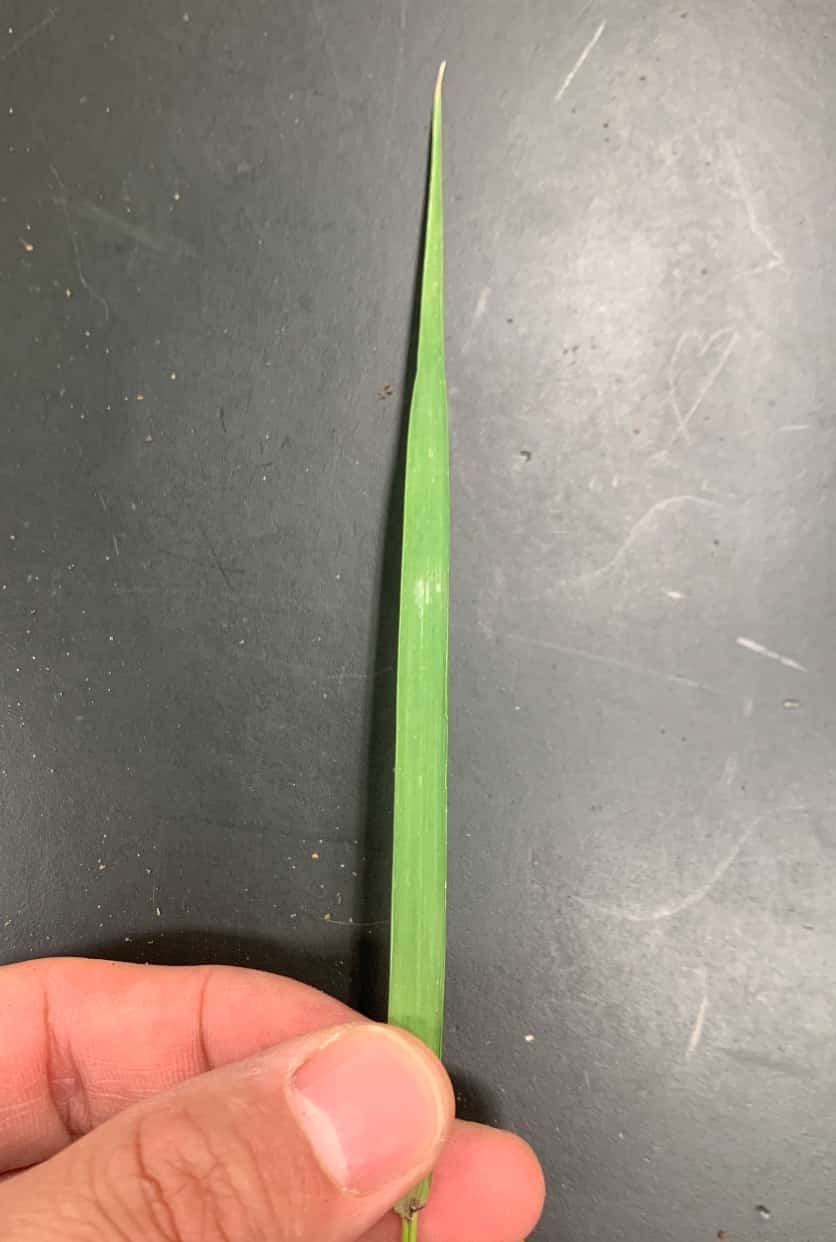
- Observe the Roots
- Lightly wash the dirt off the roots of your dug-up Brome Grass and examine the structure.
- Sketch the characteristic fibrous root system, which consists of many thin, equally sized roots rather than one large taproot.
- Unlike the taproot/lateral root system of dicots, this system is a clever design for firmly gripping the ground and resisting being knocked over.
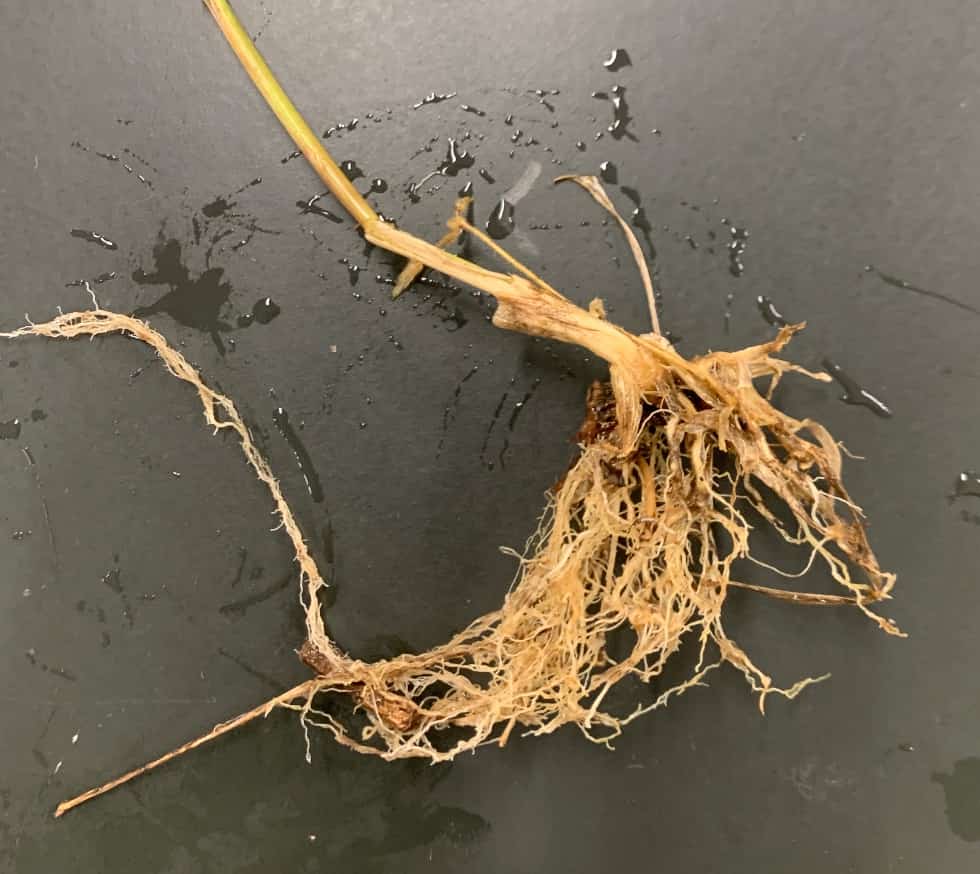
- Observe the Flower (Checking for Cleistogamy)
- Examine the flowers at the tip of the stem. Even during the peak season (May to August), you will rarely see the flower petals open.
- This is the “cleistogamous flower.” If you look inside with a hand lens or microscope, you might be able to confirm that the stamens and pistils are maturing and self-pollinating, even though the flower remains closed.
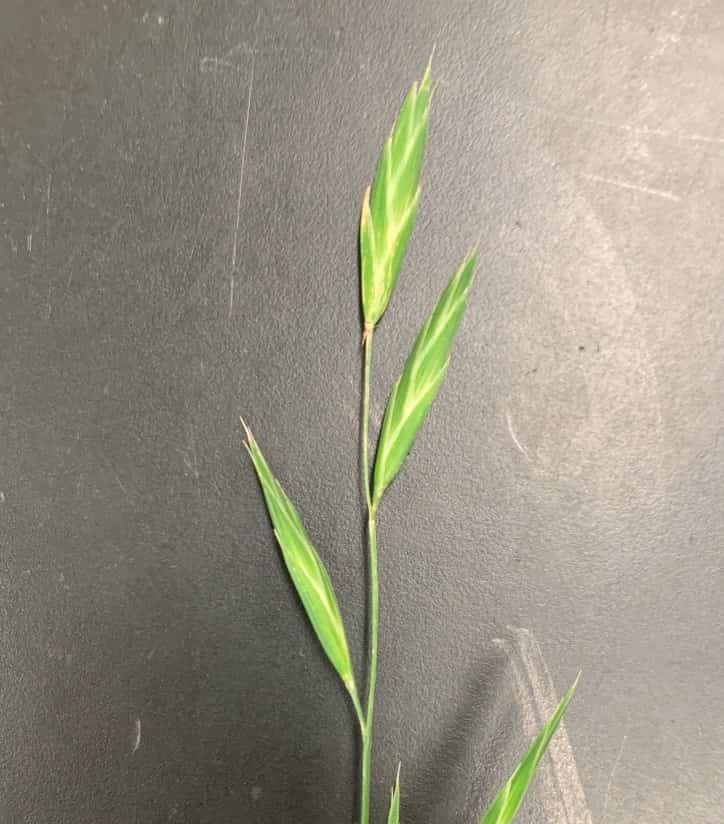
While observing, be sure to sketch! By drawing as well as simply looking, you’ll notice subtle structural differences. In my classes, I always have students compare monocots and dicots side-by-side.
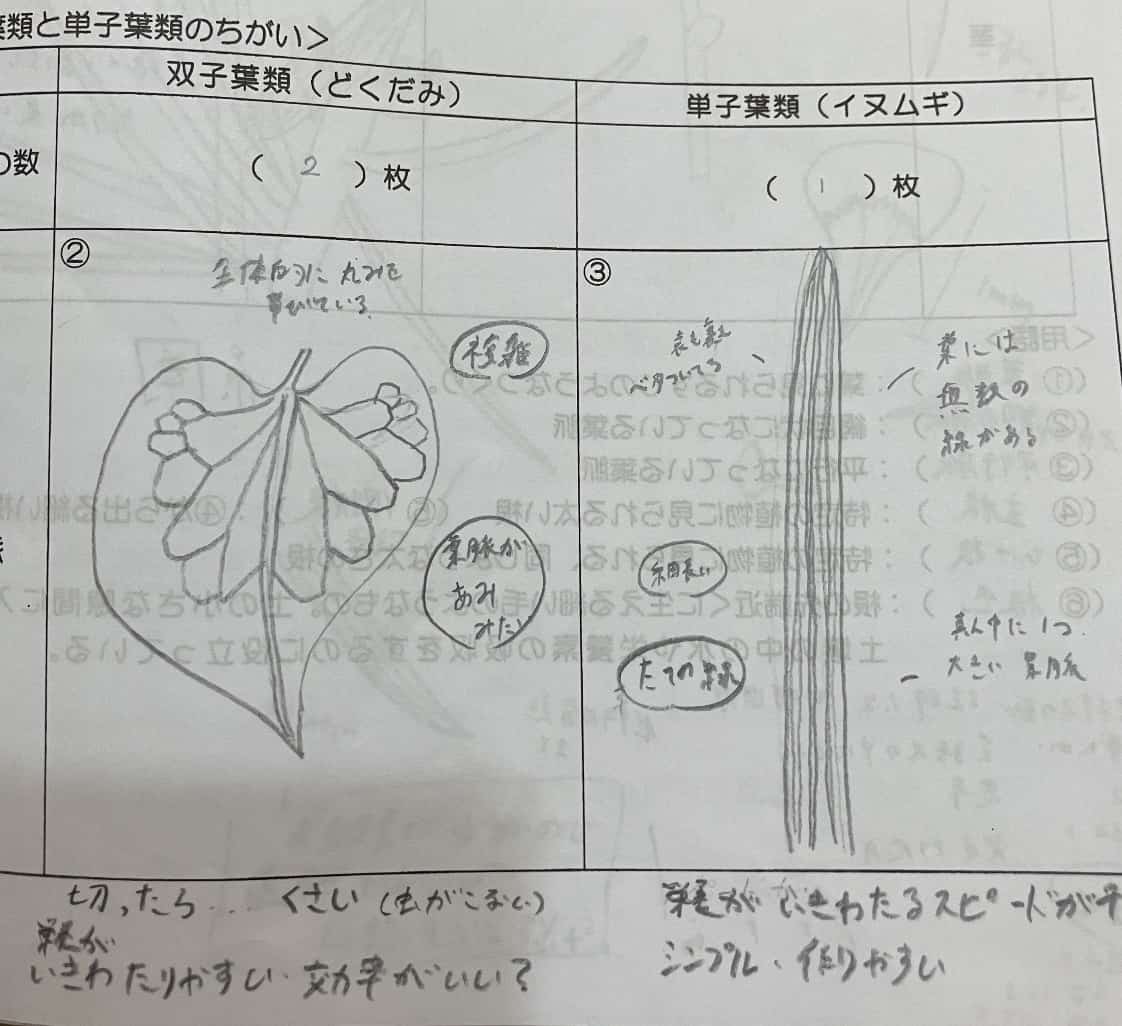
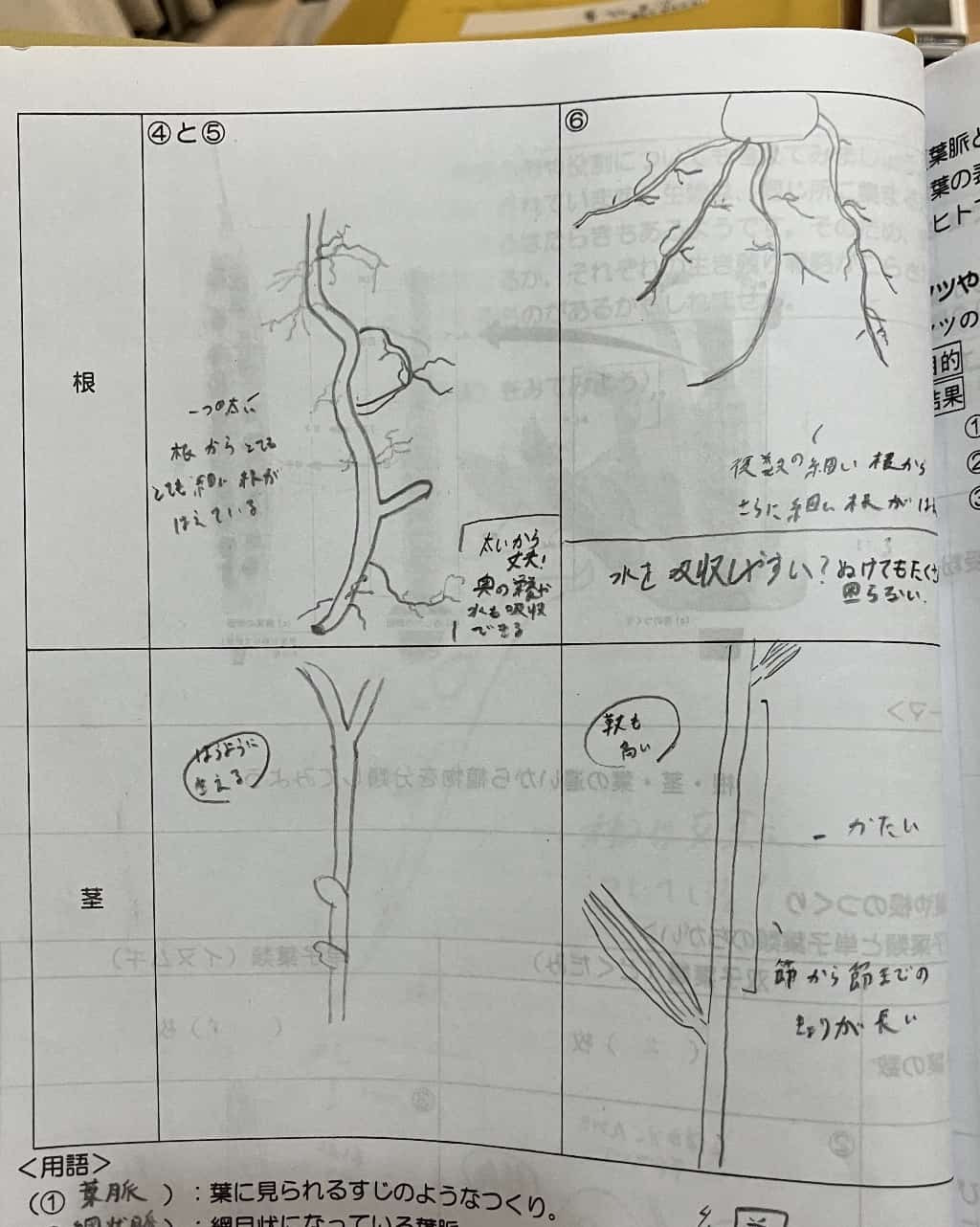
Summary and Extended Learning
What you can learn from observing Brome Grass:
- Confirming monocot features (parallel venation, fibrous roots) with a real specimen.
- Learning about the peculiar structure of cleistogamous flowers (flowers that don’t open).
- Thinking about the “reproductive strategies” plants evolved to suit their environment.
Why does Brome Grass choose not to open its flower? The answer is simple: to ensure its survival and reproduction. Relying on the wind to carry pollen (anemophily) carries the risk of the pollen never reaching a partner. However, by self-pollinating safely inside its own house (the flower), it can 100% reliably produce seeds, even if the weather is bad or there are no other plants nearby. This cleistogamy is a clever survival tactic that allows the plant to continue its life cycle even in harsh conditions.
Starting with the question, “Why doesn’t this flower open?” and expanding your thoughts to the plant’s strategy for survival—that’s the kind of deep learning you can find in observing a simple roadside weed.
Inquiries and Requests
Bring the wonder and fun of science closer to you! I’ve put together easy-to-understand tips and fun science experiments you can do at home. Feel free to search around! ・Learn about the administrator, Ken Kuwako, here ・For various requests (writing, lectures, science workshops, TV supervision, appearances, etc.), click here ・Updates on new articles are posted on X (formerly Twitter)!
![]() Experimental videos are available on the Science Topics Channel!
Experimental videos are available on the Science Topics Channel!

